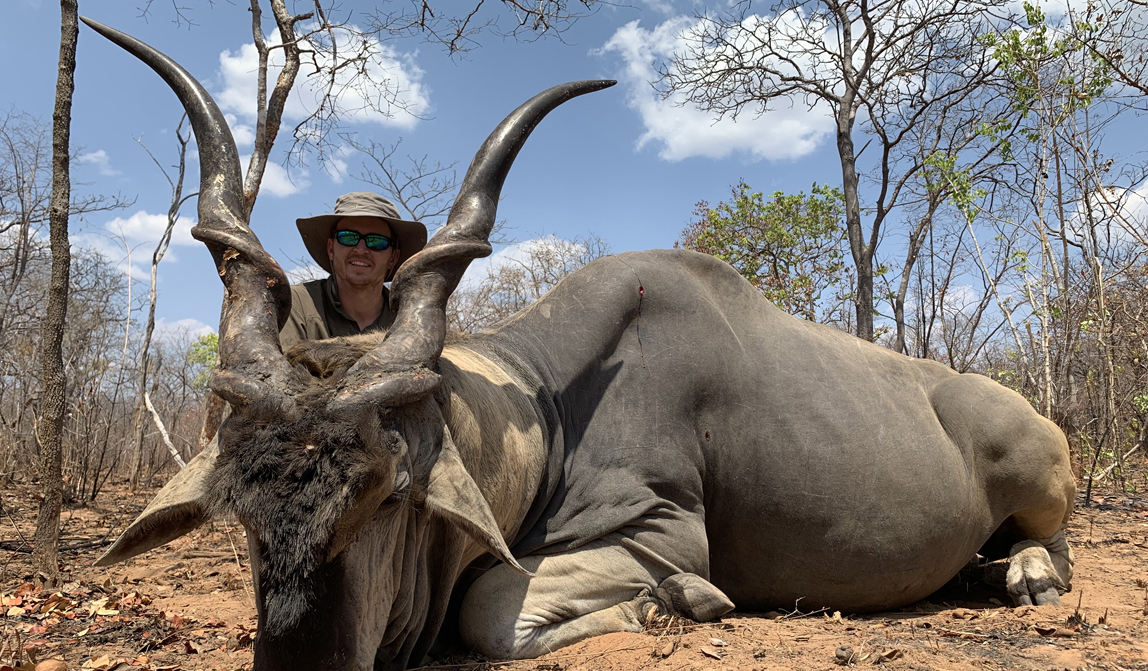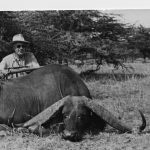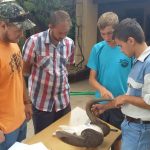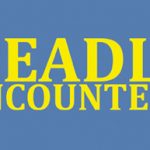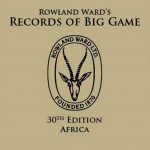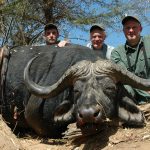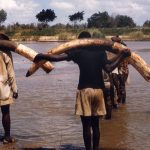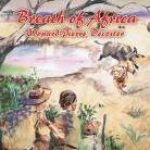Subhead: A Livingstone eland taken in Mozambique in 2019 should shatter the world record.
Photo above: Cal Lamb with his record-shattering Livingstone eland.
Cal Lamb booked his first-ever African safari with Kambako Safaris in the Nyasa Reserve in northern Mozambique in September 2019. One of the greatest tracts of undeveloped land in Africa, it covers 16,200 square miles. More than half is miombo forest, with the remainder savanna and wetlands. A very remote area, it borders on Tanzania and is renowned for a variety of game including lion, leopard, elephant, and buffalo, as well as large numbers of antelopes. The reserve is bordered on three sides by hunting areas that act as buffer zones between development and the reserve proper. Cal arrived with his friend, Nick Newberry, and booking agent, Trey Sperring. His main goal was a Cape buffalo and after that, plains game. His PH on the 10-day hunt would be Paul Wellock, and Cal indicated to Paul that while he was primarily after buffalo, he would interested in in other game if there was a chance for a mature male.
And so the safari started. The hunters were up very early, at 3:30 a.m., to be in the veld at first light. Everything moved quickly on the first day. “This was my first chance to get into the Nyasa Reserve, which I had heard so much about,” Cal said. “The first day did not disappoint. After tracking our second group of dagga boys, we got in position and shot an old bull shortly before sunset. The tone had been set for the entire trip.”
With his main prize in the skinning shed, Cal conferred with Paul about what to look for next. One animal that caught his attention was the Nyasaland wildebeest, which occur only in southern Tanzania and northern Mozambique, and have a distinctive white bar across their forehead. The safari continued, and by the halfway point, besides the buffalo, a wildebeest, a good suni , a hyena, a warthog, and a zebra were in the bag. The hunters had also seen waterbuck, greater kudu, bushbuck, and sable.
In the second half of the safari, the team decided to concentrate on eland as they had seen tracks on several occasions. Several days were spent looking, but no luck. The last day arrived and again tracks of eland were found.
“At this point, we had been tracking a group of eland with the spoor of a nice bull in the mix,” Cal said. “After following the tracks to a watering hole, we noticed a new track that had stepped over the tracks of our herd. This was a single lone bull, and it was clear to trackers Dalou and Jethro that this track was extremely fresh.”
Not only that, but the wind was now finally favorable. Eland can be very fickle, and if they are suspicious they will often keep moving downwind to keep tabs on who is following them. After tracking a short distance, Dalou and Jethro slowed down and started communicating with each other in hand signals and urgent whispers. Everybody realized the bull must be very close; suddenly Paul picked up his binocular and stared at one spot.
Cal said, “Next thing I know, Paul throws the shooting sticks up and leans into my ear: ‘There he is!’ I immediately get on the scope and can’t see a thing. I lift my head off the stock and look down Paul’s urgently pointing arm. Now the bull comes into focus, but all I can see is his rump. I put my head down and look through the scope and see the bull turn broadside. However, I can’t see the bull’s head or horns at all, and there are a bunch of saplings and small trees between me and the bull’s shoulder.
“’I can’t see his vitals very well,’ I whisper to Paul. He retorts with, ‘Did you put a solid in?’ I had. ‘It is the final day and this is a nice bull. Send it. Your solid will do the rest. Right in the middle of his shoulder.’”
After the shot, the entire team rushed forward to find that the solid bullet of Cal’s .375 shot through a small tree and hit the eland squarely in the neck. Just to be sure, however, Cal fired a second shot. Several wood splinters from the tree that the bullet went through were lodged in the eland’s neck.
Immediately it was clear the animal was of extraordinary proportions. After photos and much ogling of the hard-earned eland, it took five hours to retrieve the truck and bring it back to recover the meat and trophy. Once in camp, a preliminary green measurement indicated the eland’s horns measured 49 6/8 and 51 inches.
Africa has five varieties of eland between two species, the common and the giant elands. The eland in the Nyasa area is the Livingstone variety of common eland. It has long been a much-sought-after game animal for safari hunters in Zambia, Zimbabwe, and even, at one time, Angola. The largest head ever recorded until now, taken in Zambia in 1986, had horns of 44 2/8 and 43 inches. While the 30-day drying-out period has yet to be completed, Cal Lamb’s Livingstone eland bull looks as if it will outscore the current largest recorded head by a significant margin. In fact, its horns even exceed the minimum requirement for entry into the giant eland category, which is unheard-of for common eland.

